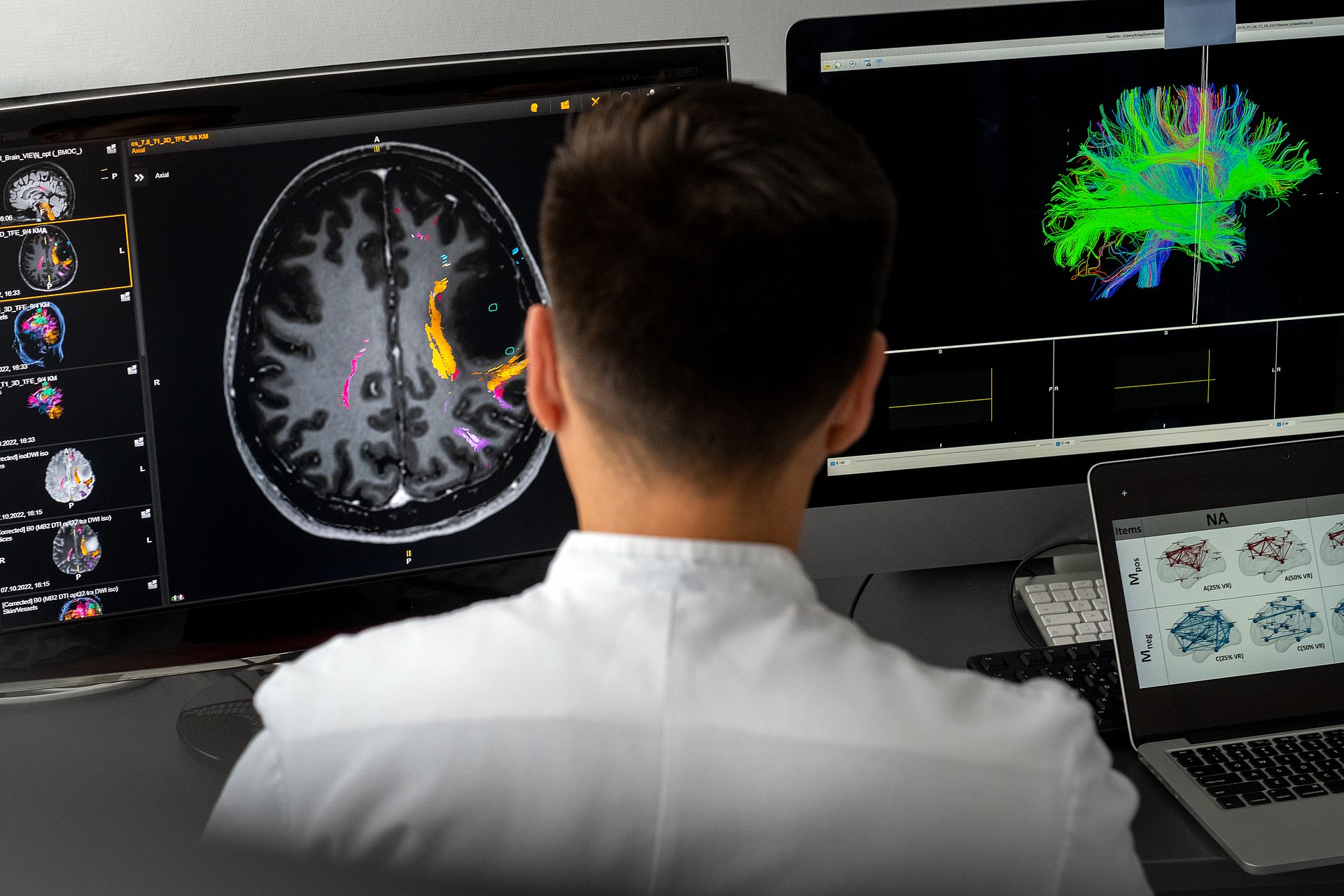TUM Center for Structural and Functional Connectomics
New center for brain research on the Garching campus

The human brain is a highly interconnected system. To understand how it works, as well as its disease mechanisms, it is necessary to decode the totality of neural connections. That will be the mission of the CSFC: Researchers will investigate the structure and function of neural circuits to improve our fundamental understanding of the healthy brain and diseases of the central nervous system. Initially, the CSFC will focus on three disease areas: multiple sclerosis, neuro-oncology and neurological developmental disorders.
These use cases will significantly advance medical imaging. The CSFC will lead the development process from basic research to clinical application by integrating high-resolution microscopy technologies, novel imaging methods, AI-supported data analysis, and computational modeling.
Interdisciplinary expertise combined at a single location
The new center will take shape over the next few years on the Garching research campus. Spanning over 2,000 square meters, it will bring together expertise in natural sciences, engineering, medicine, neuroscience, artificial intelligence, and data science. The scientific directors are Prof. Franz Pfeiffer (Biomedical Physics), Prof. Julijana Gjorgjieva (Computational Neurosciences) and Prof. Thomas Misgeld (Neuronal Cell Biology).
TUM President Prof. Thomas F. Hofmann says: "Alongside the Center for Organoid Systems, the CSFC is another important bridge for linking our strong medical research in Munich's city center with the scientific and engineering expertise at the Garching campus. Under the organizational umbrella of the Munich Institute of Biomedical Engineering, the CSFC combines basic medical research in the field of high-performance microscopy and AI-supported imaging. In this way, we aim to advance our understanding of the structure and function of the human brain and create new ways of developing more effective treatments for diseases of the central nervous system."
Prof. Franz Pfeiffer says: "At CSFC we will integrate light, X-ray and electron microscopy into a novel platform for correlative imaging across multiple scales. With the help of coherent image processing and AI, we are establishing the physical and technological foundation for a precise understanding of neural networks."
- The CSFC will connect the Munich Institute of Biomedical Engineering (MIBE), the Centers for Multiple Sclerosis and Neuroscience (CMSN) and Digital Medicine and Health (ZDMG) being set up at TUM University Hospital, and the SyNergy Cluster of Excellence. An internationally competitive research network will be created through collaboration with Helmholtz Munich, the Max Planck Society, and the national research networks “German Center for Neurodegenerative Diseases (DZNE)” and “The German Center for Mental Health (DZPG)”.
- In May 2025, the German Science and Humanities Council recommended three research buildings for funding. Of these, the CSFC was the only one to be rated as outstanding across all criteria.
- Information Joint Science Conference (GWK)
Technical University of Munich
Corporate Communications Center
- Carolin Lerch
- presse@tum.de
- Teamwebsite
Contacts to this article:
Prof. Dr. Julijana Gjorgjieva
Technical University of Munich
Professorship of Computational Neuroscience
gjorgjieva@tum.de
Prof. Dr. Thomas Misgeld
Technical University of Munich
Chair of Neuronal Cell Biology
thomas.misgeld@tum.de
Prof. Dr. Franz Pfeiffer
Technical University of Munich
Chair of Biomedical Physics
franz.pfeiffer@tum.de